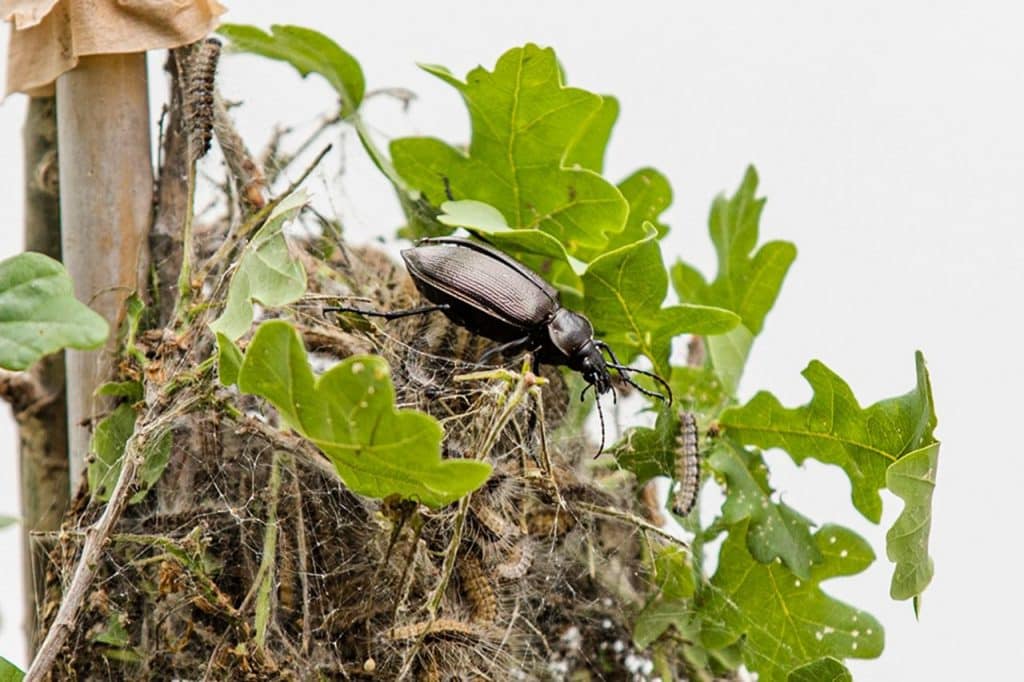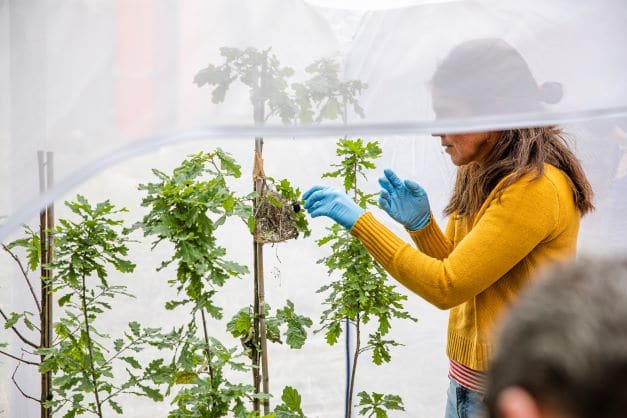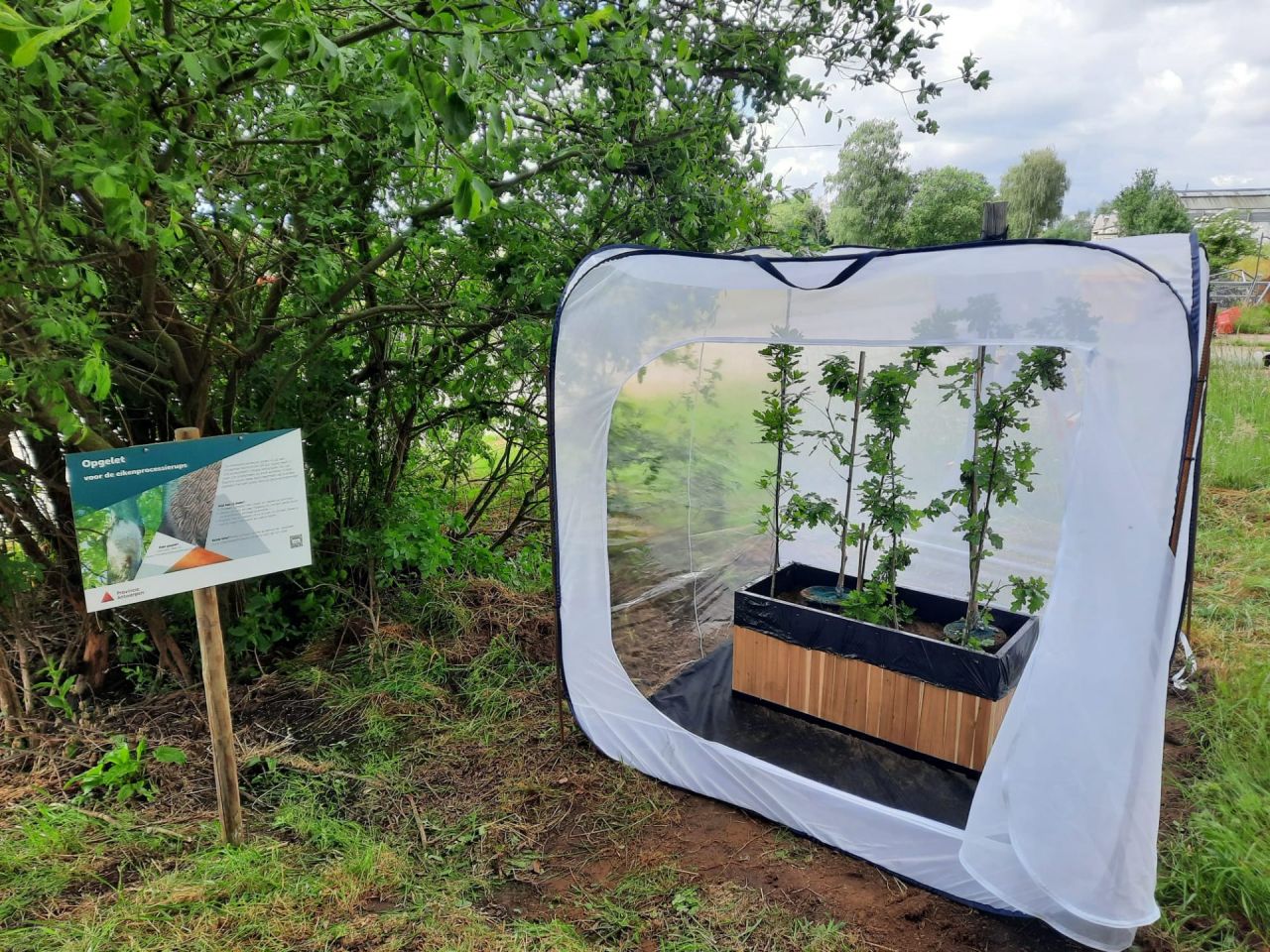The provinces of Antwerp and Limburg introduce a rare beetle as natural enemy against the oak processionary caterpillar
At the end of May, a group of forest caterpillar hunters (beetle) was moved from the lab to the outdoors. By placing the beetles together with some young oaks and oak processionary caterpillars in a closed, but water and wind-permeable tent, the researchers can determine if the beetles feed on the caterpillars in a more natural environment.

A hundred beetles were transferred from Turkey earlier this year in collaboration with INBO (Research Institute for Nature and Forest). In Turkey this beetle feeds on the Pine processionary caterpillar. After a breeding and adaptation period in the lab, it is now time for the real work, namely eating processionary caterpillars. “We do not expect any danger to our nature, because the forest caterpillar hunter is a native species that used to be a natural enemy of the oak processionary caterpillar also in Flanders. Partly due to the use of DDT, however, the species has almost become extinct in this region”, says Ann Milbau, coordinator of the European project ‘LIFE Oak Processionary’. “It is very unlikely that the beetle will pose a threat to other animal species. They are trained hunters that target specific caterpillars and if they are released close to processionary caterpillar’s nests, they will not search for other prey. In addition, the forest caterpillar hunter is already being used in various other countries for biological control.”

Not all eggs in one bowl
Within the project, five Belgian and Dutch provinces and the Research Institute for Nature and Forest are working together on biocidal-free management of the oak processionary caterpillar. Various partners combine their expertise to give the forest caterpillar hunter the best possible start. The Province of Antwerp has more than 20 years of experience in the monitoring and management of oak processionary caterpillars. “Because Pine processionary caterpillars in Turkey have an earlier life cycle than our oak processionary caterpillars, we needed to find an intermediate food source, until our caterpillars emerged. Therefore, we first fed the forest caterpillar hunters with the larvae of the Gypsy Moth and the Wax Moth. Fortunately, that transition was successful,” says Kathleen Verstraete, oak processionary caterpillar expert from the province of Antwerp.
Over the years, the Province of Limburg has built up a great deal of expertise in insect. That is why the Province of Limburg is leading the breeding program for the forest caterpillar hunter. “We don’t put all the eggs in one bowl,” says Luc Crevecoeur, project coordinator for the province of Limburg, “some of the caterpillar hunters will be released under safe conditions this year, but another part will overwinter in our lab. This way we can take the project to the next phase next year.” If all goes well, the researchers want to release the forest caterpillar hunter into nature next year, after equipping them with a small transmitter, so they can be traced.
